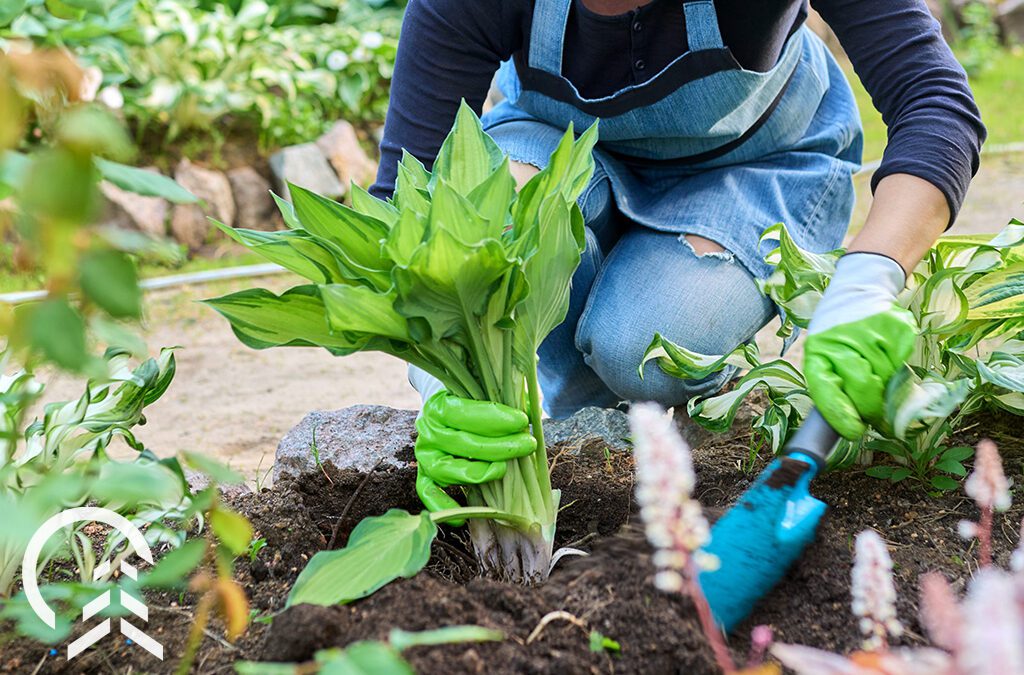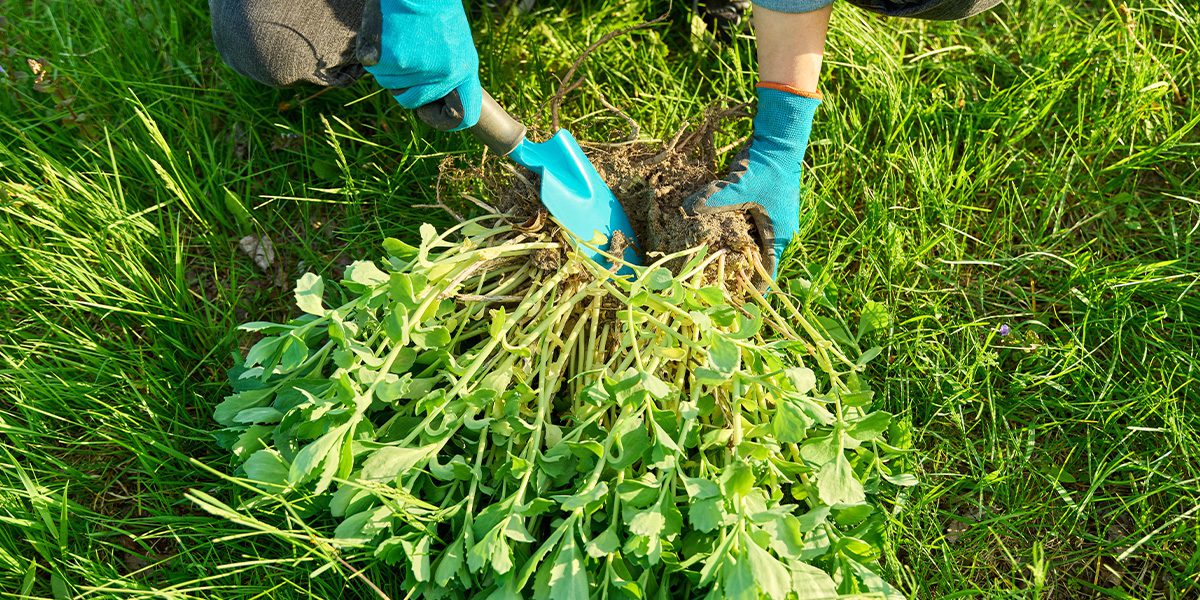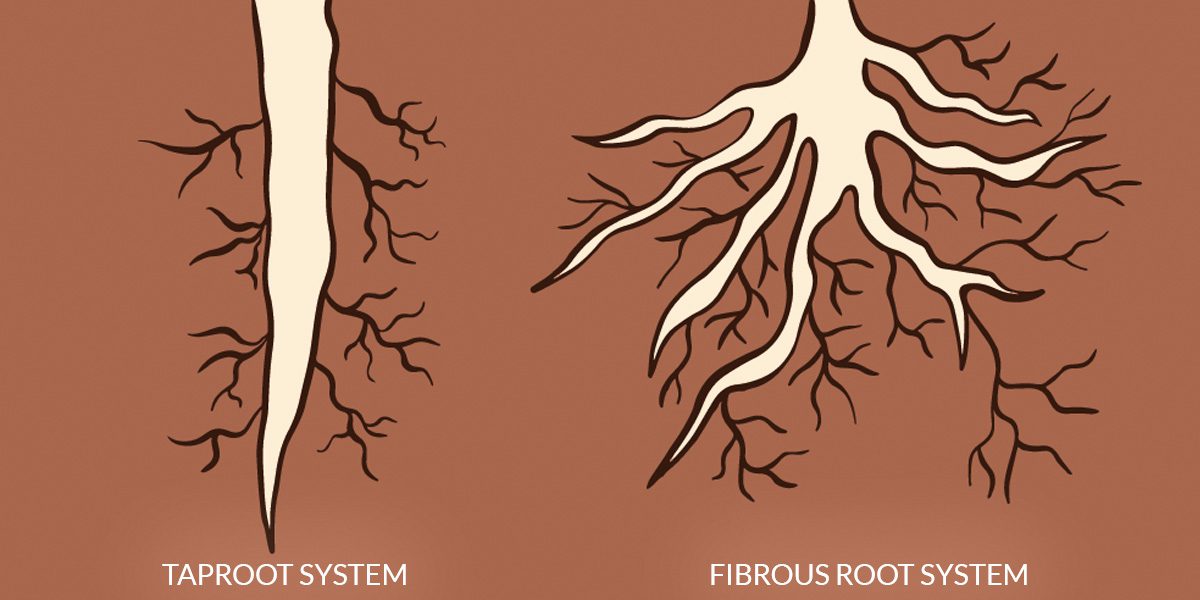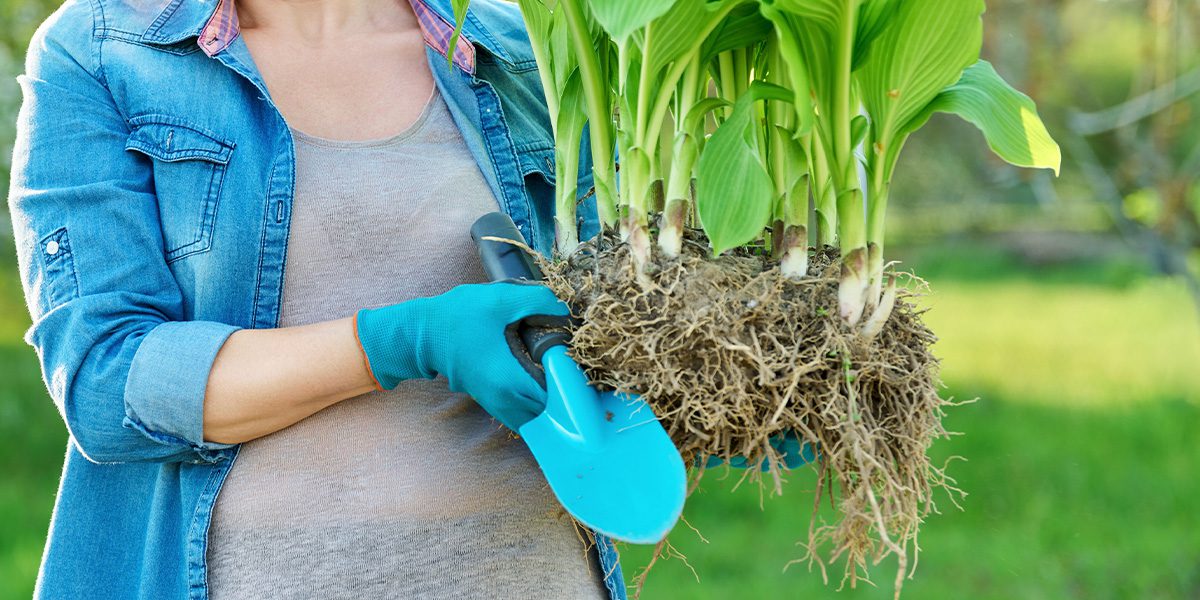Whether you’re tending to newly-divided perennials or caring for established plants, they all benefit from extra attention in the fall.
Looking to keep your perennials healthy while also expanding your plant collection? Dividing perennials is the answer! Here’s how to do it, along with a few other great perennial care tips.
Why Should I Divide Perennials?
Dividing your perennials offers your garden tons of incredible benefits, including:
- Controlling Growth: You’ve probably recently noticed a few crowded-looking perennials in your garden. Whether they’ve run out of room and are bumping up against their neighbors or are just growing too darn fast, division allows you to divide these perennials into smaller units so they have more room to grow.
- Rejuvenation: If you’ve noticed that your perennials are getting bald spots or are experiencing a decline in growth or blooms over the last few years, they could be signs that their root masses have become too cramped and restricted. Division can rejuvenate these plants by freeing up space for renewed growth and vitality.
- Propagation: Whenever you divide perennials, you receive more plants at the end of the process. One perennial becomes two or even three or four. If you simply want to multiply your plants, you can divide perennials for the pure joy of propagation.
Guidelines for Dividing Perennials in Chicago
Before you even bring out a spade, it’s important to plan out how you’re going to divide your perennials. Here’s a step-by-step guide to help make the process as smooth and painless as possible!
- Do Some Prep Work: Choose a mild, overcast day to divide your plants so they stay cool during the process. You should also water your plants the day before division, as more moisture in the roots will put the plants under less stress and give you an easier time digging.
- Dig Up the Mother Plant: Dig a trench that’s wide and deep enough to keep as much of the root ball as possible, and gently lift the perennial from the soil.
- Divide the Roots: Depending on the type of root system, you can divide the root ball in one of three ways: If possible, gently tease apart the roots with your hands. If that’s ineffective, work a fork into the clump and separate the mass by moving it back and forth. For tubers and rhizomes, you can cut them apart with a knife or sharp spade. Ensure each division has a good amount of roots and at least 3-5 healthy shoots.
- Replant Divisions: Discard dead parts of the plant and replant your divisions at the same depth they were before. If you’re moving them to a new location, it’s better to dig a hole in advance to minimize stress on the plant. When the plants are out of the ground, keep them moist in a bucket of water in the shade, and remember to water them after replanting.
When to Divide Perennials in Chicago
Autumn is an ideal time to divide your perennials because the temperatures are cooler and most plants are done flowering, except for fall bloomers. Plus, doing it now means you’ll have one less thing to do in the spring.
Pro Tip: When dividing your plants, do it about 4-6 weeks before the ground freezes so their roots have time to establish themselves.
More Guidelines for Perennial Division
Here are a few other tips and tricks to help you divide your perennials with confidence this fall:
Can I Divide Taproots?
Species like milkweed, false indigo, balloon flower, and sea holly have long taproots that extend deep into the ground and are almost impossible to divide, so it’s best to leave these plants alone; however, you can try slicing a portion of the root and foliage into separate divisions.
What Should I Do with Woody Roots?
In general, perennials with tough woody roots should not be divided. However, species that multiply with runner branches dipping into the soil—like lavender, candytuft, and Russian sage—can absolutely be divided for propagation!
How Should I Deal With Roots that Are Hard to Dig?
Some perennials, including certain large, ornamental grass species, have deep, strong, tightly woven root structures that are difficult to dig up, so unless you want to dig a massive hole, it’s usually easier to chunk off a section of these roots without uprooting the whole mother.
Common Mistakes to Avoid
Here are a few common pitfalls to avoid when dividing your perennials this fall:
- Digging Too Close: Remember that it’s always better to dig too far from your plant than too close, as you risk accidentally cutting off too many roots. The same goes for depth—too deep is better than too shallow.
- Too Many Divisions: When you make your division too small, the plant doesn’t have enough energy to grow, and if they do succeed in recovering, it could be a few years before they show flowers. Instead, ensure each division has ample roots and at least 3-5 healthy shoots.
- Dividing on a Hot Day: While a hot sunny afternoon in fall may inspire you to get outside in the garden, warmer temperatures aren’t ideal for dividing plants. Instead, aim to divide your perennials on cloudy days or in the mornings or evenings, as these times put your plants under less stress.
- Forgetful Watering: Treat your divisions like new plants and water them until the first frost as they settle into their new spot. If you can’t replant your divisions immediately, keep them in water until you can transfer them to soil.
Preparing Your Perennials for Winter
Whether you’re tending to newly-divided perennials or caring for established plants, they all benefit from extra attention in the fall. In particular, watering your perennials in the fall is essential for preparing them for the dry months of winter. It’s also key to trim away any diseased foliage to give them a clean start next spring. Finally, some—but not all—perennials benefit from extra mulch to keep them warm, notably those that are tender and newly planted.
Autumn can be a busy time, but it’s also a final opportunity to enjoy your garden and prepare your plants for the winter. If you need any more guidance on perennial plants, come visit our garden centers in Bloomingdale and Carpentersville!
Platt Hill Nursery is Chicago’s premier garden center and nursery.





